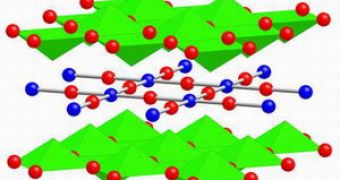20 years ago, researchers at the Argonne National Laboratory came with the most known high-temperature superconductor YBa2Cu3O7.
Now, they have solved another puzzle of the superconductivity: how a slight change in the structure of electron-doped superconductors turns superconductivity on and off.
Superconductivity is the lack of any resistance to the flow of electric current at very low temperature, with the potential to save huge quantities of energy if applied to the electric power grid.
The new class of materials found 20 years ago at Argonne superconducted at dramatic -109.9? C, promising widespread energy-saving applications.
These superconductors are "hole-doped," as their superconductivity is provoked by removing electrons (adding "holes") to an insulating magnetic compound.
Some of the high-temperature superconductors, however, are "electron-doped," necessitating the addition of electrons to produce superconductivity and they must be brought to high temperature during their manufacture to enable them to superconduct.
The heat treatment was puzzling; it did not seem to affect the structure or composition of the material, but it dramatically turned the material from an insulator to a superconductor. "Our discovery opens the door to understanding how electron-doped superconductors work. We didn't realize the interplay of structure and superconductivity was so subtle. But now that we know what is good for superconductivity, we can vary the amount of the good and bad stuff in systematic ways to find out what makes them tick", said co-researcher Stephan Rosenkranz.
The research team discovered that by heating the electron-doped superconductor Pr1-xLaCexCuO4, subtle flaws in the microscopic structure of the material were repaired. These delicate flaws, that escaped detection for nearly two decades, were discovered employing two magnifying glasses.
They measurements of copper atom positions, employed X-rays at the Advanced Photon Source (APS) at Argonne, matched with measurements of the oxygen atom positions by neutrons at the National Institute for Standards and Technology Center for Neutron Research. These measurements showed a small change in the location of both copper and oxygen atoms occurring during the heat treatment, resulting in the superconductivity structure.

 14 DAY TRIAL //
14 DAY TRIAL //